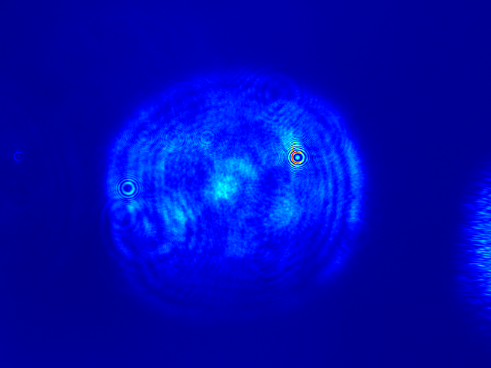SciML is working closely with the
Central Laser Facility in a number of aspects to help build the next
generation of laser science in the UK. We are working on projects
ranging from control of laser instruments through to advanced data
analysis of results from the facility.
Instrument control
High power laser systems at CLF/EPAC aim to deliver efficient energy sources that have applications in both research and industry across a broad range of fields including Physics, chemistry and biology. At high power laser systems, one of the significant problem is laser induced damage on optical components where one optical component failure leads to continuous destruction of inexpensive successive optical components. Therefore, damage has to be identified in real-time to stop the avalanche effect or predicted well before it occurs to protect the components thereby preserving the quality of the laser output. Although laser induced damage threshold is provided for an optical component from the manufacturer, the damage occurrence during the experiment is inevitable because the laser induced damage mechanism is still not clear.

Fig 1. Laser induced damage on optical component
Currently, we are developing a machine learning based model to predict the laser damage in real-time. Further, we are exploring the meta-data such as properties of optical components, laser, and sensor to identify laser damage sequence to find a laser damage precursor to stop the laser output to avoid the damage. This helps scientists to utilise high quality laser beam by protecting the inexpensive optical components.
Data Analysis
FLImP
Fluorescence localisation imaging with photobleaching (FLImP) allows to map out the spacing of molecules in complexes with a resolution better than 5 nm. FLImP has been used to characterise the molecular architecture of complexes of epidermal growth factor receptor (EGFR), the target of a number of drugs in clinical use. Signals from EGFR are responsible for the control of cell growth and EGFR mutations are implicated in many cancers. At present, successful FLImP imaging is a user-intensive process, requiring manual intervention for the selection of regions of interest (ROI) for image segmentation, autofocusing of images, and track selection. We are developing machine learning techniques that can automatically determine optical focus, detect regions of interest and automate many aspects of FLImP analysis – greatly increasing the applicability of the method.
STORM
Stochastic optical reconstruction microscopy (STORM) is a method for super resolution imaging based on the high accuracy localization of individual fluorophores. STORM uses optically switchable fluorophores by varying exposure to light. STORM allows us to study the interaction between two molecules by observing two target molecules in the same period. It is done using two dyes. Currently one of the main bottlenecks on STORM analysis is aligning particles from different channels and frames in the data collected. We are developing methods to automate the detection pairing of beads and alignment of channels to increase the efficiency of STORM data analysis.
